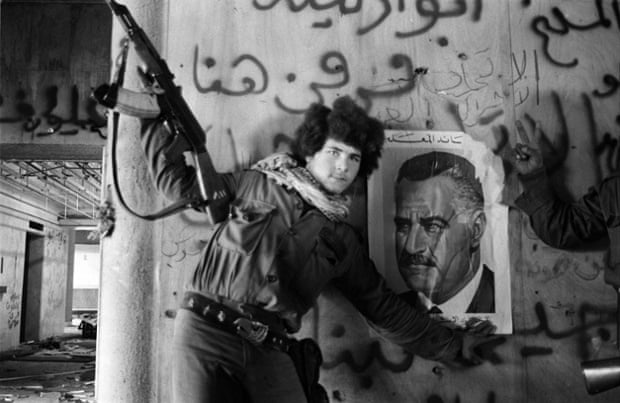
http://www.theguardian.com
Though Lebanon has been swept by a gentrifying and disfiguring development rush, some older monuments still stand tall. Strolling downhill from the Clemenceau neighbourhood for a coffee on the seaside Corniche, you’ll see the towering building of the Holiday Inn: bullet-riddled and rocket-pierced.
The once-plush hotel, which opened for business just two years before the Lebanese civil war broke out in 1975, has remained in Beirut’s collective memory – not for its glamour or architectural design, but as a front-line, a demarcation between east and west, and a symbol of war.
The Holiday Inn represented an affluent time for the city: the building became part of a luxury developmental bubble at a time when Beirut’s banks were growing fat on deposits from the region’s petrodollars. However, the civil war obliterated the hotel’s ambitions of becoming a social hub, with cinemas and restaurants crowned by a rooftop rotating restaurant towering over the district.
In October 1975, just months into the Lebanese civil war, the hotel became part of an epic battle dubbed “the war of the hotels”. It lasted until March 1976 and mobilised around 25,000 fighters from both sides, resulting in more than 1,000 dead and 2,000 injured.
The Holiday Inn was the biggest in an area already jammed with hotels – an area that became strategically important because of its proximity to the sea: it was located between the coastal neighbourhoods of Ain el-Mresi and Mina al-Hosn, on top of a hill overlooking the city.
As the civil war began to polarise the city into east and west, the two main antagonists – the Lebanese Front (Christian rightwing militias backed by the Lebanese army) and the National Movement (Lebanese leftist parties backed by Palestine’s PLO) – raced to capture the district.
Seen by militants as a strategic military asset, the Holiday Inn became a trophy in the battle. “We descended on the hotel district from three directions,” recalls Abu Ali, 66, a veteran of the war on the side of the National Movement. “The battle to take the Holiday Inn dragged on. That building felt like an unshakable castle. The Christian fighters who had raced us to it managed to create supply lines that kept feeding their fighters barracked in the hotel, and positioned their snipers on the upper floors and rooftop.”
Heavy artillery was fired from surrounding rooftops, pounding the Holiday Inn and creating the damage that is still visible today.
“Shortly after the battle, hordes of scavengers entered the building and stripped it down to its bones,” Ali said. “The Holiday Inn was then sold on the streets of Beirut: beds, silver spoons, curtains.”
Later, after the 1982 Israeli invasion of Beirut – in the second phase of the civil war – the Holiday Inn building was once again disputed turf, this time between former allies; with the al-Mourabitoun losing control of the building to the Amal Movement.
These battles were, in a sense, an introvert war fought by the city’s occupants who turned their own homes into an open battleground – a war fought from alley to alley, building to building.
Since the conflict’s end, the shareholders of the bullet-riddled building have been locked in a dispute over its future. The Lebanese partners Compagnie Immobiliere Libanaise wanted to renovate the building and set up luxury lofts for rent or sale. However, the Kuwaiti group that owns half wanted to demolish it, and build a new tower block similar to those in the surrounding downtown area.
Today, entry is forbidden to the public. The building’s 24 floors are desolate: shrubs sprout from the concrete floors, the grey mouldering walls still bearing scars of countless bullet holes and political graffiti from a bygone era. Its Lebanese and Kuwaiti owners recently declared their intention to put the building up for auction.
Many years after the fighting ceased, the building has become a popular site for underground dance parties. On a Saturday night in 1998, many Lebanese mingled in the same building where 23 years earlier their parents had fought each other. I was one of the revellers: we snuck out of our parents’ homes and drank and danced until the early hours on a site still vividly synonymous with the 15-year civil war.
In spite of the postwar efforts to resurrect Lebanon’s elusive golden age, the country once more teeters on the edge of an abyss. Lurking in the background of the glitzy, redeveloped downtown district, the disfigured façade of the Holiday Inn stands as a reminder that Lebanon’s civil war politics are far from resolved.
- Which other buildings in the world tell stories about urban history? Share your own pictures and descriptions with GuardianWitness, on Twitter and Instagram using #hoc50 or let us know suggestions in the comments below





